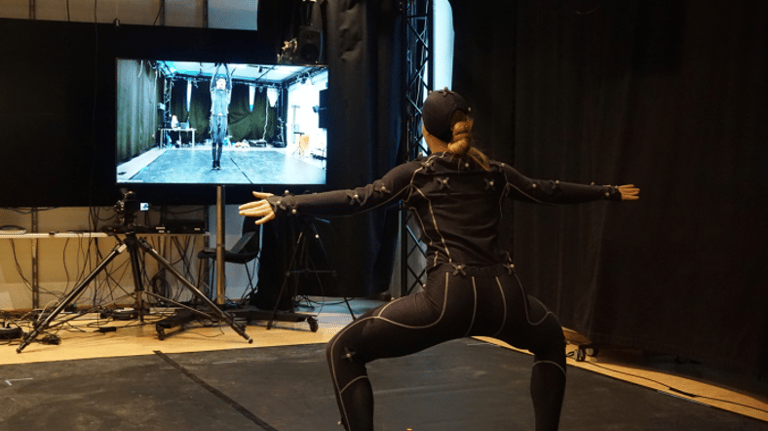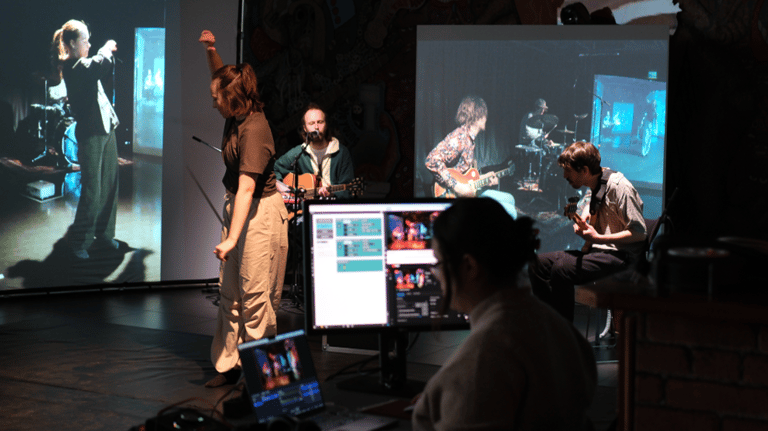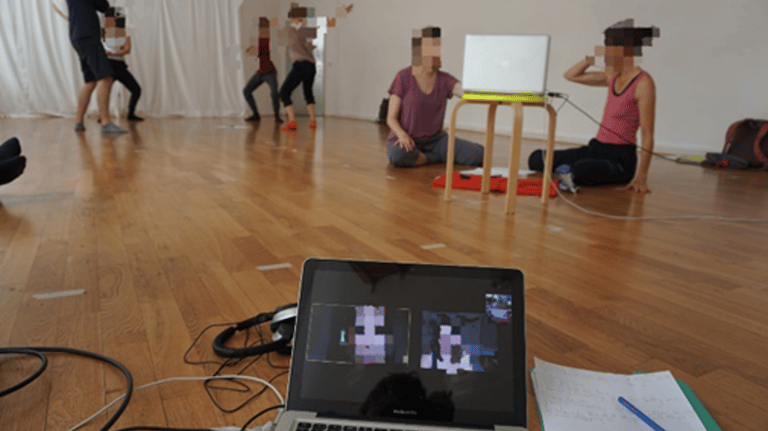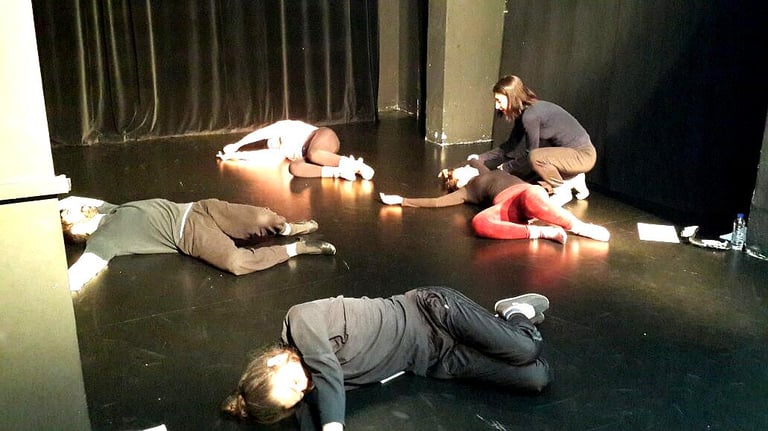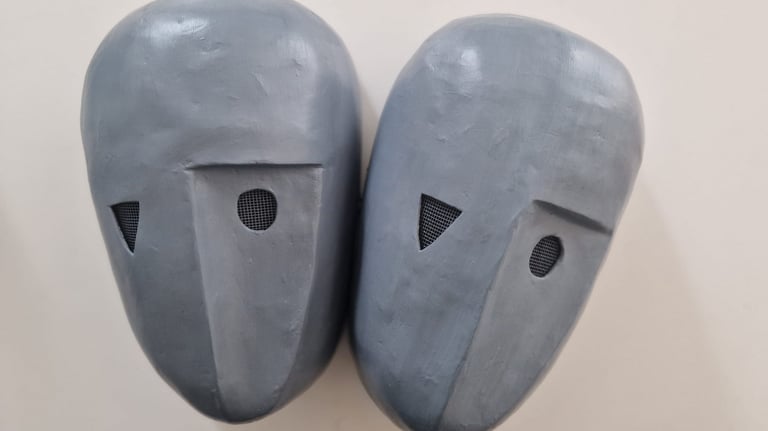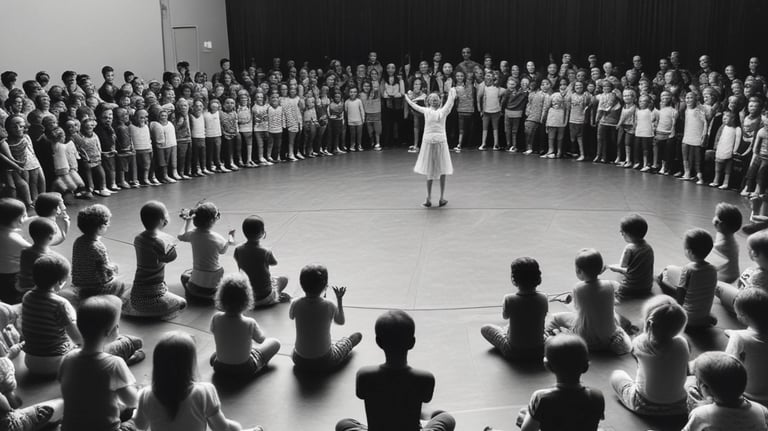Interdisiplinary research across movement, technology and aesthetics
My primary research focus is on embodied knowledge centred around the convergence of technology, movement, and aesthetics
Remote Improvisation in Telematic Environments
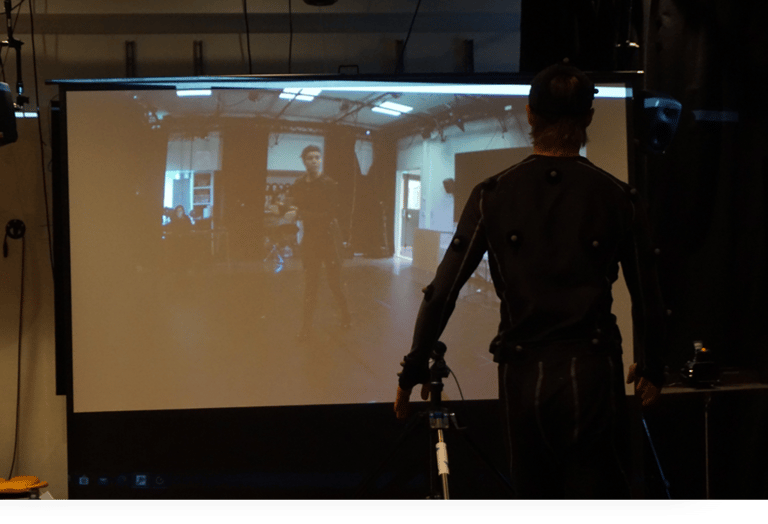

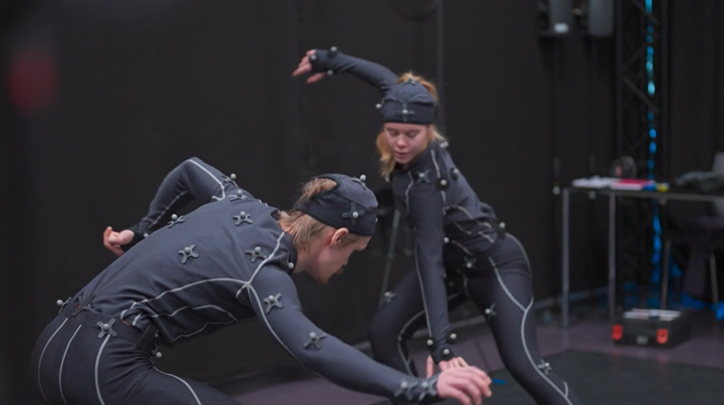

This study investigates how telematic systems intervene in dancers’ creative processes, with particular attention to the differences in interaction that arise when using standard versus low-latency technologies. Specifically, it asks how dancers experience collaboration through Zoom compared to LoLa, and what new modes of coordination emerge when performing in co-located versus remote environments. To explore these questions, two contemporary dancers engaged in an exploratory study, developing a 10-minute improvisation-based choreography across three different settings: co-located (in a shared physical studio), remote via Zoom (a standard-latency video conferencing platform), and remote via LoLa (a low-latency audiovisual streaming system). Each session followed the same structure, comprising a 15-minute warm-up, a 45-minute creation period, and a 10-minute performance, followed by dancer reflections and semi-structured interviews.
To ensure technical and spatial symmetry between remote locations, sessions were conducted in matched studio environments at the University of Oslo—specifically, the IMV Portal Lab and the RITMO Motion Capture Lab. A multimodal data collection strategy was employed to examine the interactional and perceptual dimensions of the performances. Motion capture (Optitrack) was used to capture movement coordination and spatial dynamics, while physiological sensors (Equivital) monitored heart rate, respiration, and body temperature as indicators of embodied effort and stress. Video recordings and motiongrams were used to visualize the structure and flow of the improvisations, and post-session interviews provided insight into the dancers’ subjective experiences, including cognitive load, attentional focus, and adaptation strategies.
This is an ongoing study, and data analysis is currently in progress. Several academic publications based on this research are in preparation, aiming to contribute to the fields of dance studies, performance technology, and embodied interaction in digitally mediated environments.
This ongoing project investigates how bodily interaction and coordination are shaped when dancers collaborate remotely through telematic systems. As part of the AMBIENT project, the study explores how digital mediation—via platforms such as Zoom and LoLa—alters dancers’ sense-making, co-presence, and improvisational strategies.
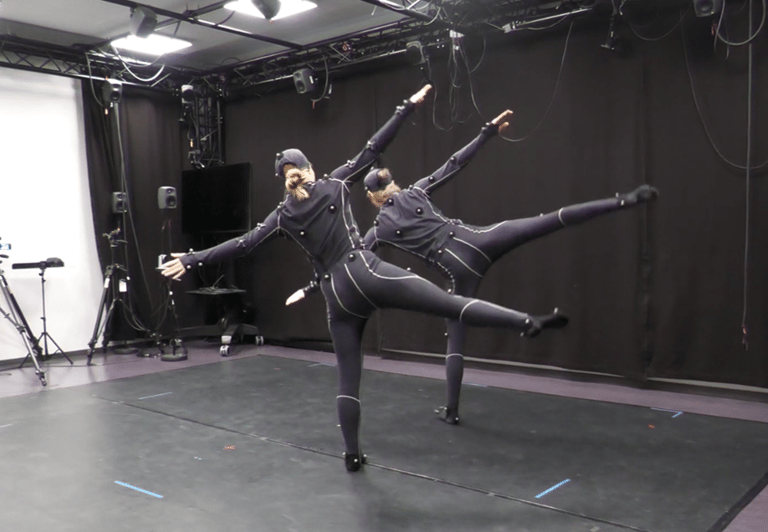

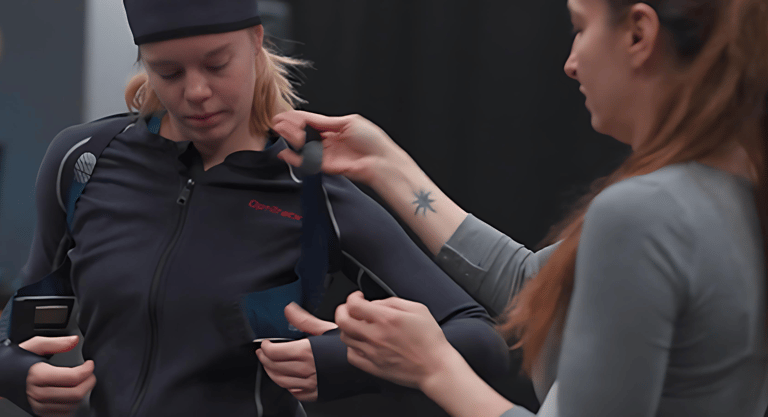

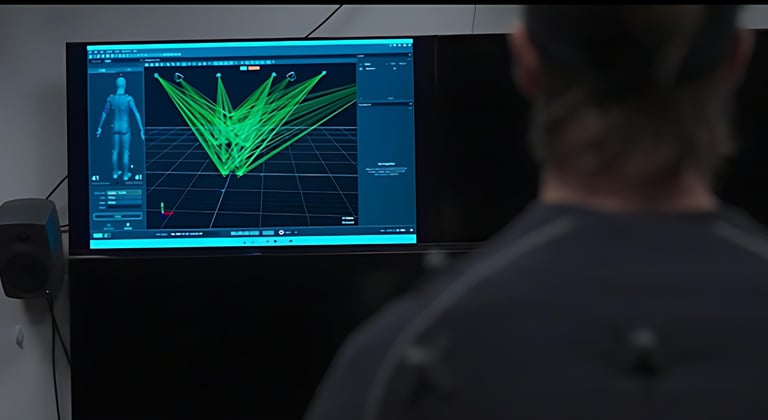


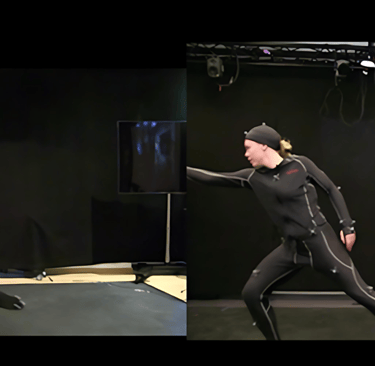

Dancers' preparation for data collection before improvisation starts
Co-Located Improvisation
Remote Improvisation
The study was conducted at the RITMO Centre for Interdisciplinary Studies in Rhythm, Time and Motion, as part of the AMBIENT project, funded by the Norwegian Research Council
Networked Music-Dance Performance:
A Case Study Telematic@Popsenteret
Telematic@Popsenteret is a collaborative performance project exploring the artistic and technical possibilities of real-time networked performance, where musicians and dancers perform together across multiple physical spaces. The event took place at Popsenteret in Oslo and was developed within the AMBIENT research project at the RITMO Centre for Interdisciplinary Studies in Rhythm, Time and Motion, University of Oslo, in collaboration with the Department of Musicology, C2HO: Creative Computing Hub Oslo and Kristiania University/Department of Performing Arts.
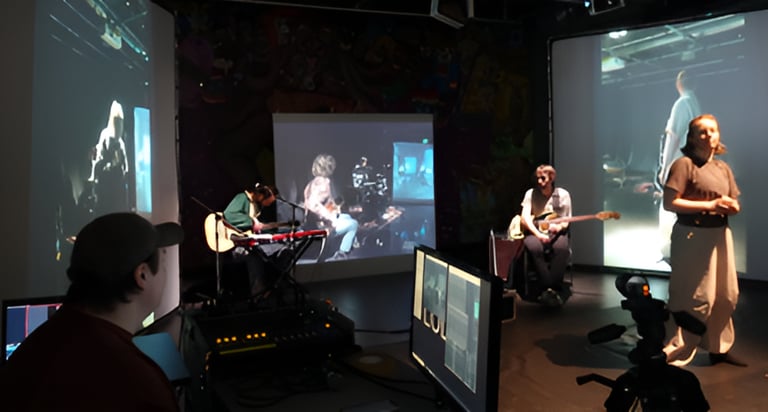

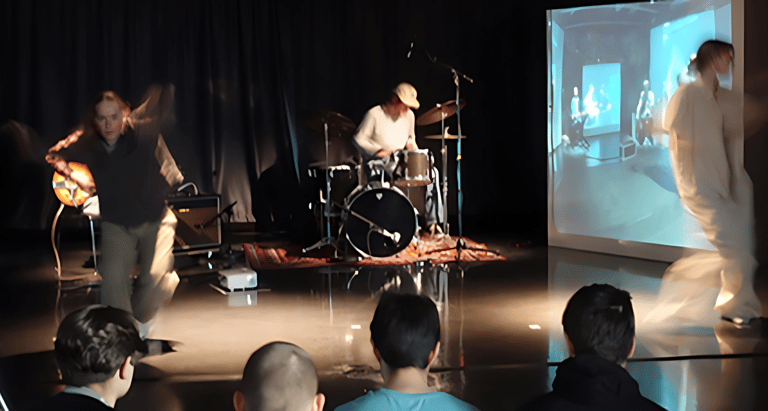

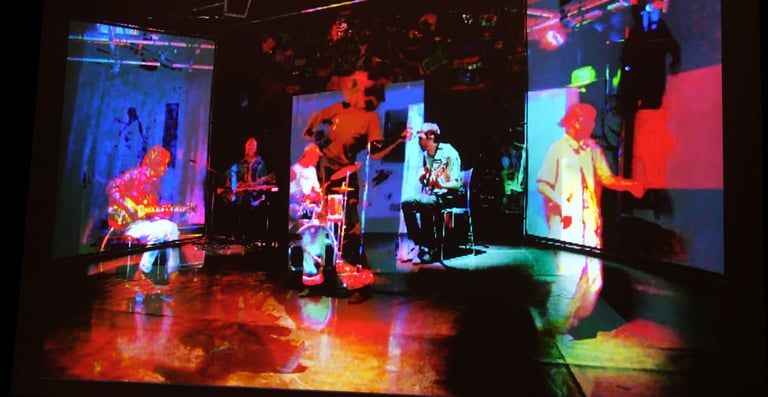

Musicians and dancers were distributed across three rooms of the venue, performing simultaneously while connected via a modular audio-visual network. The audience could move freely between rooms or watch a livestream, engaging with the performance both physically and digitally. The project combined artistic creation with technical experimentation, asking how spatial separation, latency, and screen-based mediation shape performer interaction and audience experience.
At the heart of the project is the question:
How do musicians and dancers adapt their creative and interaction strategies when collaborating across technological and spatial distance?
To support this investigation, the technical team designed three modular streaming systems using LoLa (low-latency audio-visual transmission) and custom OBS-based setups. A key challenge was expanding a system originally built for networked music to accommodate dance performance, which required new solutions in projection, camera angles, and spatial staging to support full-body movement.
The performance was developed collaboratively through improvisation, with a flexible structure allowing artists to respond to each other in real time across rooms and screens. Researchers documented the process through video recordings, interviews with performers, and audience feedback to better understand the dynamics of digitally mediated co-creation.
Telematic@Popsenteret highlights the evolving nature of live performance in hybrid environments and showcases the potential of interdisciplinary collaboration in music, dance, and technology.
Several academic publications based on this project are currently under review.
Distributed Performance Stage 1 on the first Floor
Distributed Performance Stage 3 Screening Room
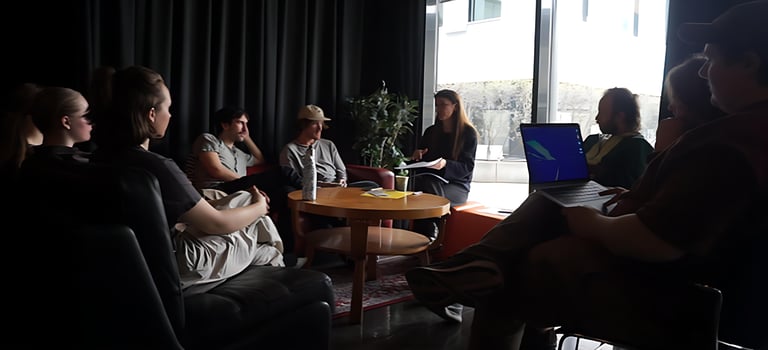

Distributed Performance Stage 2 on the forth floor
Post-Interview with the performers
The study was conducted at the RITMO Centre for Interdisciplinary Studies in Rhythm, Time and Motion, as part of the AMBIENT project, funded by the Norwegian Research Council
Responsible Researchers: Bilge Serdar and Aleksander Tidemann

Hybrid Format Somatic Movement Training During COVID-19
This research explores how digital mediation transforms embodied learning within somatic movement practices, with a focus on hybrid and remote participation. Based on ethnographic fieldwork conducted during a month-long Laban/Bartenieff Movement Studies (LBMS) training in 2021, the study examines the impact of Zoom-mediated environments on sensorimotor experience, interpersonal dynamics, and pedagogical processes.
LBMS is a somatic-analytical movement system that combines physical experience with reflective tools such as demonstration, drawing, writing, and hands-on touch. During the COVID-19 pandemic, the program shifted to a hybrid format, bringing together in-studio and remote participants. This setting offered a rare opportunity to examine how video conferencing technologies reshape bodily perception, attention, and collaborative meaning-making.
Ethnographic data were gathered through direct participation, field observations, audio-visual recordings, and semi-structured interviews with both participants and instructors. Daily feedback sessions and first-person reflections were central to the analysis, offering insight into how participants navigated the learning process across physical and digital spaces.
The research highlights the challenges and adaptations involved in what is termed remote intercorporeality—the ways in which bodies relate, perceive, and respond to one another across distance. It demonstrates how variations in spatial, sensory, and technical conditions influenced not only individual experiences but also the shared dynamics of sense-making and embodied knowledge production in the hybrid training environment.
This project contributes to broader debates in dance, performance studies, and cognitive science about the role of technology in shaping embodiment, attention, and social interaction. It argues that hybrid training formats require rethinking not only pedagogy and infrastructure but also how we conceptualize bodily presence, autonomy, and learning in technologically mediated environments.
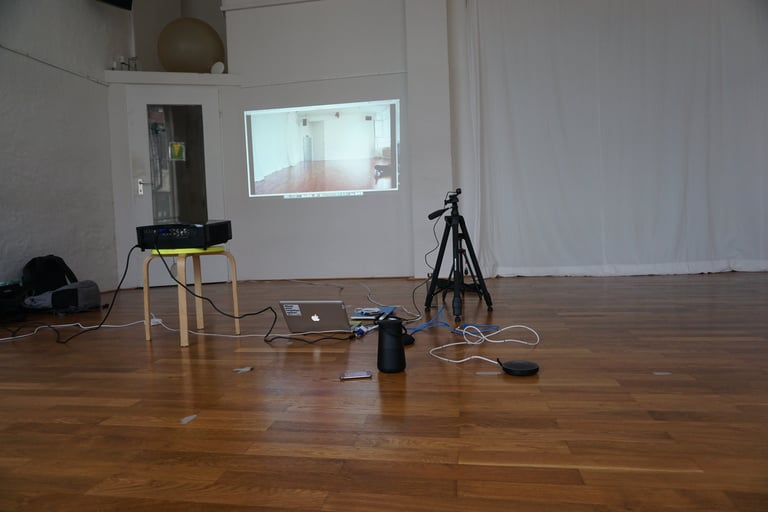

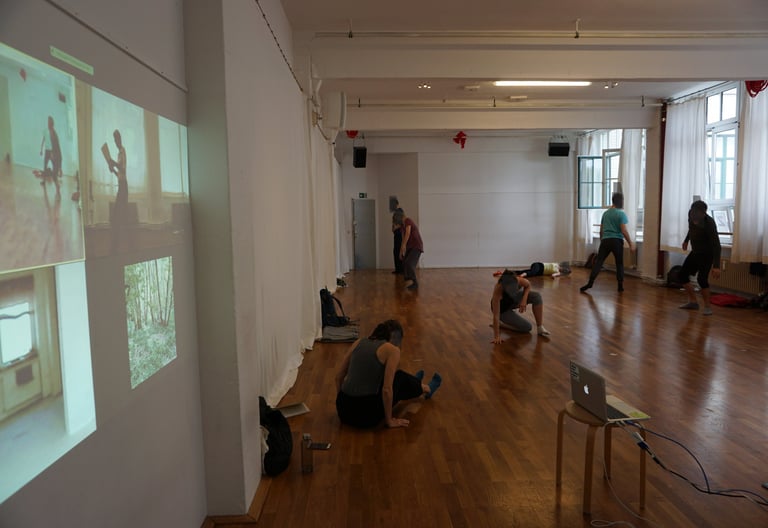

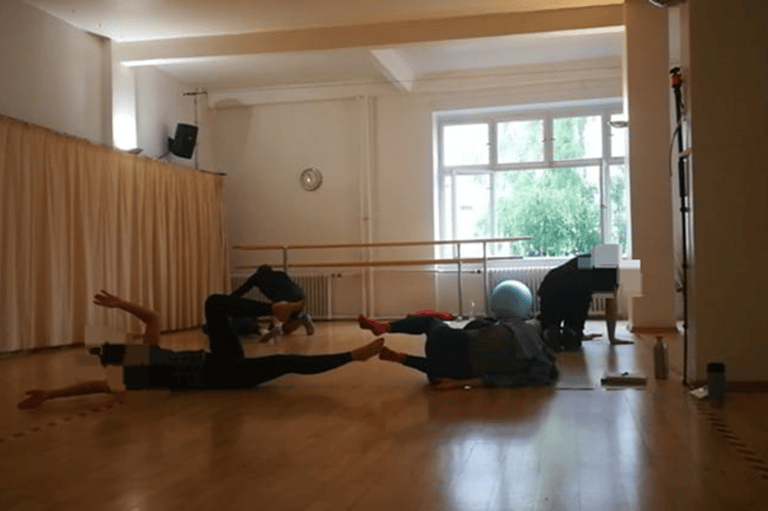

This research was conducted as part of the Choreomundus – International Master in Dance Knowledge, Practice, and Heritage Programme, funded by Erasmus Mundus
This project explores the intersection of cognitive science, phenomenology, and contemporary theatre through the lens of somatic practices in actor training. Drawing on theories of embodiment and enaction, the research investigates how bodily experience serves not only as the medium of performance but also as the foundation of cognitive and creative processes. At its core, the project challenges Cartesian dualisms by emphasizing that perception, emotion, intention, and meaning-making are inherently rooted in movement and bodily action.
Central to this research is the author's own extensive experience with somatic disciplines, including Feldenkrais Method, Laban/Bartenieff Movement Studies, and the Lecoq pedagogy. These embodied approaches not only shaped the core arguments of the dissertation but also provided a lived foundation for exploring the potential of somatic learning in actor training. Rather than treating the body as an instrument to be externally trained, these practices encourage inner awareness, kinaesthetic sensitivity, and personal authenticity—qualities that inform both the performer’s craft and their relational presence on stage.
By integrating enactive cognitive theories, which propose that cognition emerges through embodied action and environmental engagement, the project argues for a shift in how acting is taught and understood. Somatic education becomes both a philosophical and practical framework for developing a “performative body consciousness”: a heightened, pre-reflective state of awareness that supports expressive, adaptive, and co-creative performance.
Through a synthesis of theoretical reflection and embodied inquiry, this project proposes a scientifically grounded and artistically generative model of actor training. It contributes to contemporary debates in theatre pedagogy by positioning movement-based self-exploration as a powerful means of learning, transformation, and artistic presence in 21st-century performance.
Somatic Approach to Actor Training: An Enactive Perspective (PhD Project)
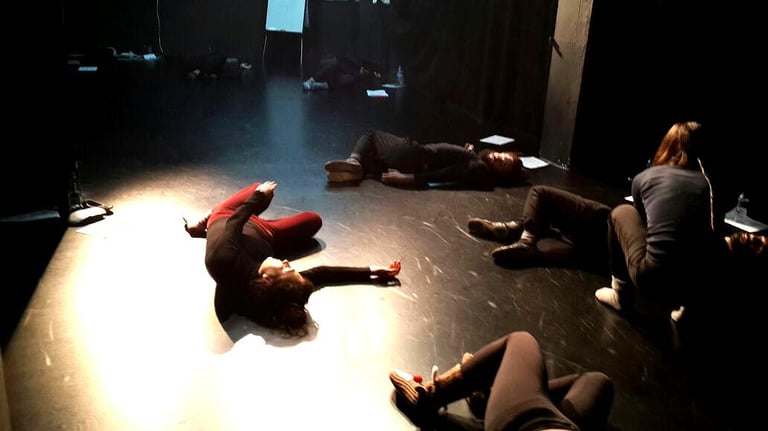

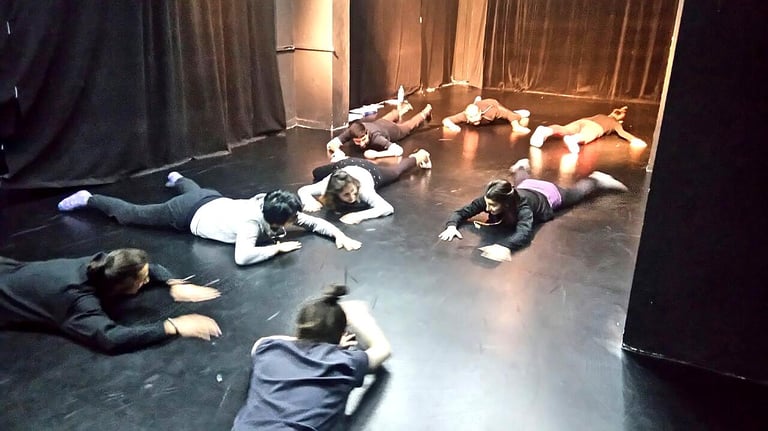

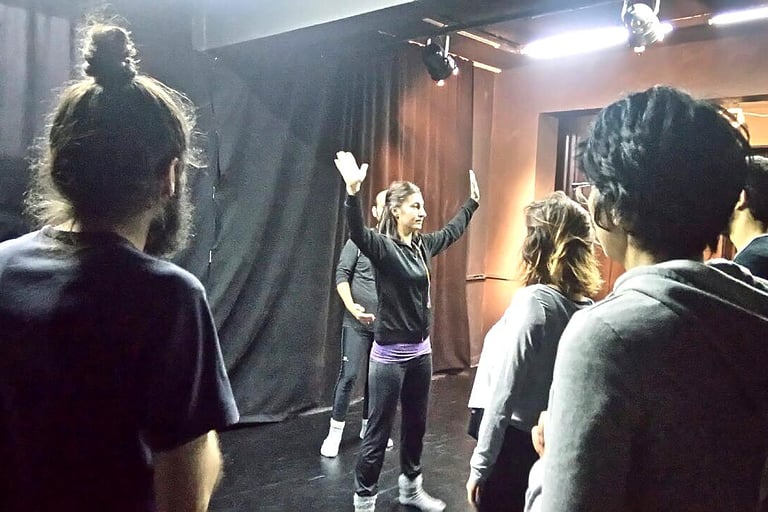

Metaphysical Mask and Robotics: Intention, Perception, and Robot Control
This interdisciplinary research project bridges performing arts training and robotics to investigate how human movement conveys intention in the absence of facial expression. At the centre of the study is the metaphysical mask, a form of neutral mask traditionally used in physical theater and actor training to cultivate embodied awareness and expressive clarity. By eliminating facial cues, the metaphysical mask compels the performer to rely solely on bodily expression to communicate narrative, motivation, and emotional nuance.
The project explores how observers interpret these masked performances and which movement features contribute to their understanding of intention. Through structured performance scenarios, physiological data, and audience interviews, the study investigates the relationship between expression, perception, and context.
Findings will inform both performance theory and robot motion design, offering insights into how bodily expression can enhance legibility and engagement in human-robot interaction (HRI).
The project is currently in the early phase of the data collection process.
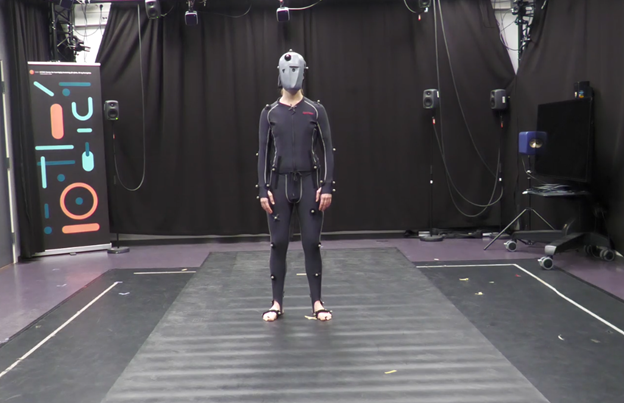

The study funded by RITMO Centre for Interdisciplinary Studies in Rhythm, Time and Motion at University of Oslo
Responsible Researchers: Bilge Serdar and Benedikte Wallace
Dance As an Aesthetic Experience
in Theatre For Young Audiences (TYA)
This research, developed as a Master’s thesis, explores how dance functions as an aesthetic and symbolic mode of expression in performances for young audiences. Drawing on concepts such as kinaesthetic empathy, aesthetic distance, and intercorporeal communication, it argues that dance engages children through embodied modes of perception that move beyond narrative or didactic strategies. Rather than illustrating stories, dance becomes an autonomous poetic form—capable of triggering affective, sensory, and cognitive responses.
The study was enriched by practical insights gained during internships with Batida Theatre Company (Denmark) and Dorky Park Dance Company (Berlin), and through collaboration with De Stilte, a Dutch dance company specializing in work for young audiences.
In this study, I advocate choreographic approaches that value ambiguity, rhythm, and presence over mimetic representation, and position dance as a vital strategy for expanding theatrical expression and audience engagement in early years and youth theatre.
